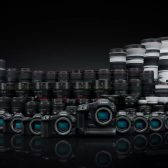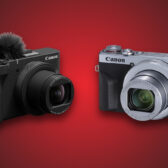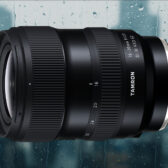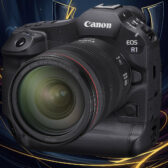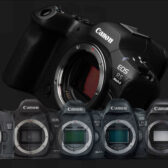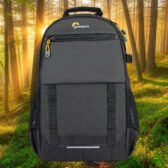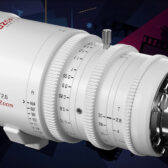Gordon from CameraLabs decided to review the PowerShot 350, and I personally love his reviews when he dives back into history to pull out some esoteric cameras long forgotten. As we wait for the global release of the PowerShot V1, it’s a fun time to go back 28 years ago to 1997.
The PowerShot 350 came out in 1997 and featured a 350k CCD senser (640×480 resolution).
The MSRP at the time was 699 which translates to around $1400 in today’s dollars.
There is a history with this camera it wasn’t really a Canon developed camera as Gordon mentions, as Panasonic developed the original camera and OEM’ed it to Canon and also Minolta. Panasonic’s developed the NV-DCF1 that was featured in Comdex 1996, it was then spun into the PowerShot 350, Konica Q-Mini and the Panasonic VZ-XP1.

The Panasonic model did have a slightly different look to it, but the ergonomics and guts were the same. The PowerShot 350 certainly has a unique look that you just don’t see in today’s cameras unless you are purchasing a Fuji Instax camera, with a squarish look to it, and the PowerShot’s first rear LCD screen a staggering 1.8″ in size.
The back of the camera was amazing, giving you controls and sliders unseen these days.
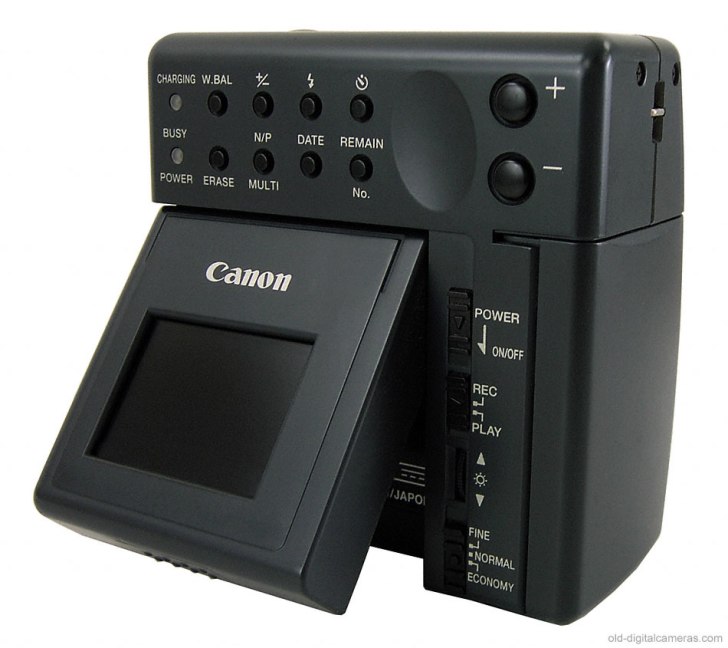
This camera certainly marched to its own drum in ergonomics but had a fantastic number of buttons and sliders to play around with.
The lens was a fixed 43mm equivalent lens (6mm in actuality) and had the ability to close focus manually down to 3cm for macro mode. It actually supports video out, so I guess you could use it as a webcam these days – now that would be wild.
Canon Europe still has a PowerShot 350 support page up for it, but sadly no manuals – I would have loved to have seen an old manual for it. However, you can get zoombrowser support still.
PowerShot 350 Features
According to Canon’s Camera Muesem, the PowerShot 350 had the following features, which for 1996 and 1997 were pretty impressive. It used a compact flash card and had an LCD screen – which were modern features at the time.
- 1.8″ LCD (Liquid Crystal Display) monitor
- High image quality using a 43mm f/2.8 lens (35mm film equivalent)
- High-resolution rectilinear CCD (Charge-Coupled Device) with a 350,000-pixel matrix
- Programmable automatic exposure and four-level exposure adjustment
- Built-in flash with red-eye reduction function
- Can shoot up to 47 frames using a Compact Flash card (with a 2-MB capacity)
- Macro Zoom function for close-up shots (minimum distance 3 cm)
- Convenient choice of three types of power source
CameraLabs Conclusion on the PowerShot 350
So, what did Gordon think about it? For uniqueness, this is something pretty cool, but he’d consider something just a little more modern for photography.
If you’re looking for a more usable everyday vintage digital from Canon, I’d consider something from their PowerShot A, S or G series a few years later. But if you’re after something a bit more unusual, the 350 will certainly turn some heads and for collectors will represent a unique moment in Canon’s digital development.
PowerShot 350 Specifications
| Image Sensor (CCD) | Size | 1/3″ |
| Method | Complementary color filter/Interline | |
| Number of Pixels | 350,000 pixel (total) | |
| Sensitivity | Equivalent to ISO 120 | |
| Image Data Storage | CompactFlash ™ card (Type I) | |
| File Format | CIFF (JPEG) | |
| Recorded Image Size | 640 x 480 | |
| Lens | 6.0mm f/2.8 (35mm film equivalent : 43mm) | |
| Shutter Speeds | 1/4-1/2000 sec. | |
| Focusing Range | Standard | 70 cm-infinity |
| Macro | 3-70 cm | |
| Built-in Flash | Auto, Forced ON/OFF, Red-eye reduction | |
| White Balance Control | TTL auto/manual | |
| Viewfinder | Optical | — |
| LCD | 1.8″ color LCD | |
| Recording Capacities* | using 2MB CF card | |
| Fine | 11 shots (640 x 480) | |
| Normal | 23 shots (640 x 480) | |
| Economy | 47 shots (640 x 480) | |
| Interfaces | Serial/CF card slot/Video Out | |
| Compatible Operating Systems | Windows® 95, Macintosh | |
| Power Supply | Three AA alkaline batteries, Dedicated Ni-Cd Battery (optional), Dedicated AC adapter (optional) | |
| Dimensions (W x H x D) | 93 x 94 x 51.3 mm | |
| Weight (body only) | Approx. 290 g | |
| Accessories | 2MB CF, three AA alkaline batteries, video cable, wriststrap, soft case, application software | |
Camera Labs Video Review
Special Thanks to digitalkameramuseum.de who had alot of background information on this camera and thanks to CameraLabs for the walk down memory lane.
Source: CameraLabs
|
When you purchase through links on our site, we may earn an affiliate commission. Here's how it works. |



